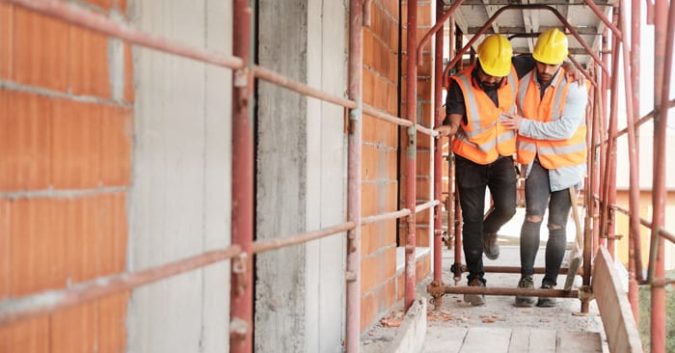Construction Workers and Tradesmen At Risk
Construction workers and skilled tradesmen are some of the hardest working people in the country. Though the work they do is crucial, the nature of their jobs can put them at risk. A simple slip or fall can lead to a long-term disability or even death.
In the construction field, workers are put at risk in many different ways every day. According to the Occupational Safety and Health Administration (OSHA), 1 in 5 worker deaths in 2017 were in the construction field.
Sadly, with proper oversight from construction supervisors and others, these injuries may have been avoided. And while workers’ compensation may help pay some medical bills, it may not be enough to cover all of the expenses an accident can bring.
However, many construction workers do not realize that they may be entitled to more than just workers’ compensation. Construction jobs are complex, and may involve many third parties such as sub-contractors and property owners. These third parties may be found at fault for a workplace injury depending on the circumstances.
What Jobs Put Workers at Risk?
For many people in the U.S., skilled construction and manufacturing jobs are rewarding and make for a good living. According to the Bureau of Labor Statistics (BLS), construction-related jobs pay around $33,000-$79,000 a year. Many of these jobs do not require a college degree, which can make the earning potential great in terms of initial investment.
Unfortunately, construction jobs can put workers in danger of serious injury or death. Last year, an average of around 18 people died every week while working at a construction site.
According to data from the Bureau of Labor Statistics, the construction industry had the highest amount of on-the-job deaths in 2017. And a report from 24/7 Wall Street, a USA Today news affiliate, noted that 20% of the most dangerous jobs in the U.S. are related to construction, according to 2017 census data from the BLS.
These jobs include:
- Construction Workers: Construction workers face a wide array of risks at the workplace, from falling off of high buildings to injuries from equipment malfunctions.
- Construction Helpers: Those who assist construction workers have a slightly lower fatality rate than other jobs, but they are still at risk. The report states that over 2,500 construction helpers were injured in 2017.
- Painters: According to the 24/7 Wall Street report, painters on construction sites face slightly different dangers such as falls from ladders and exposure to dangerous chemicals.
- Equipment Operators: Those who work mainly with cranes, trucks, and other pieces of mobile equipment are at an increased risk of transportation-related injuries or deaths. The report notes that equipment operators may suffer from long-term, stress-related physical problems.
- Supervisors: While supervisors take on a more management role, they may still be hands-on with the day-to-day opportunities of construction sites. As a result, they run a greater risk of on-site injury.
Dangers on the Job
The widespread duties on construction sites means that many people are at risk of suffering an accident. OSHA lists 4 of the most common accidents faced by construction workers, which include:
- Falling: Falling was the biggest danger for construction workers in 2017, contributing to nearly 40% of all construction-related deaths. Because construction workers often work on scaffolding or from heights, they are at a higher risk of getting seriously injured from falls.
- Getting struck by an object: Construction sites house many different objects that can hit workers if they drop, break apart, fall, or get mishandled. Vehicles, flying debris, and other on-site materials can easily injure construction workers in struck-by-object incidents.
- Being electrocuted: Construction workers who work with or install electrical materials may be put in great danger if the materials are not handled properly. Electrocution made up 7% of all construction worker deaths in the private sector for 2017.
- Getting caught, compressed, or crushed by equipment: Construction workers are in great danger if the equipment they rely on malfunctions. People who get stuck in or crushed by machines may need major surgery or amputations if they survive. This category also includes collapses of structures or buildings while on the job.
Who Is to Blame?
Sometimes when an accident happens, people place blame upon themselves. When it comes to construction-site injuries, however, it is usually much more complicated. Compilations of data show that there have been plenty of cases where innocent workers have fallen victim to someone else’s negligence.
Sadly, many painful or deadly accidents could be avoided with adequate guidance, supervision, and precaution from a site manager or supervisor. Due to the prevalence of these types of accidents, workers’ compensation is frequently covered through your direct employer’s insurance if you choose to pursue a legal claim following an accident.
All that said, workers’ compensation may not be the only recourse if you or a loved one have suffered a serious injury. Those who manage and enforce worksite rules and regulations (such as supervisors, contractors and property owners) could be held accountable.
Who is to blame for a construction injury depends on different factors in each case, including:
- When the accident occurred
- What factors could have prevented it
- Where the supervising personnel were at the time of the accident
Whenever there is an injury at a workplace, it is important to get legal assistance. Many injured workers may be able to get more financial assistance by filing a lawsuit. The resulting funds can help pay for medical expenses and recovery costs.
